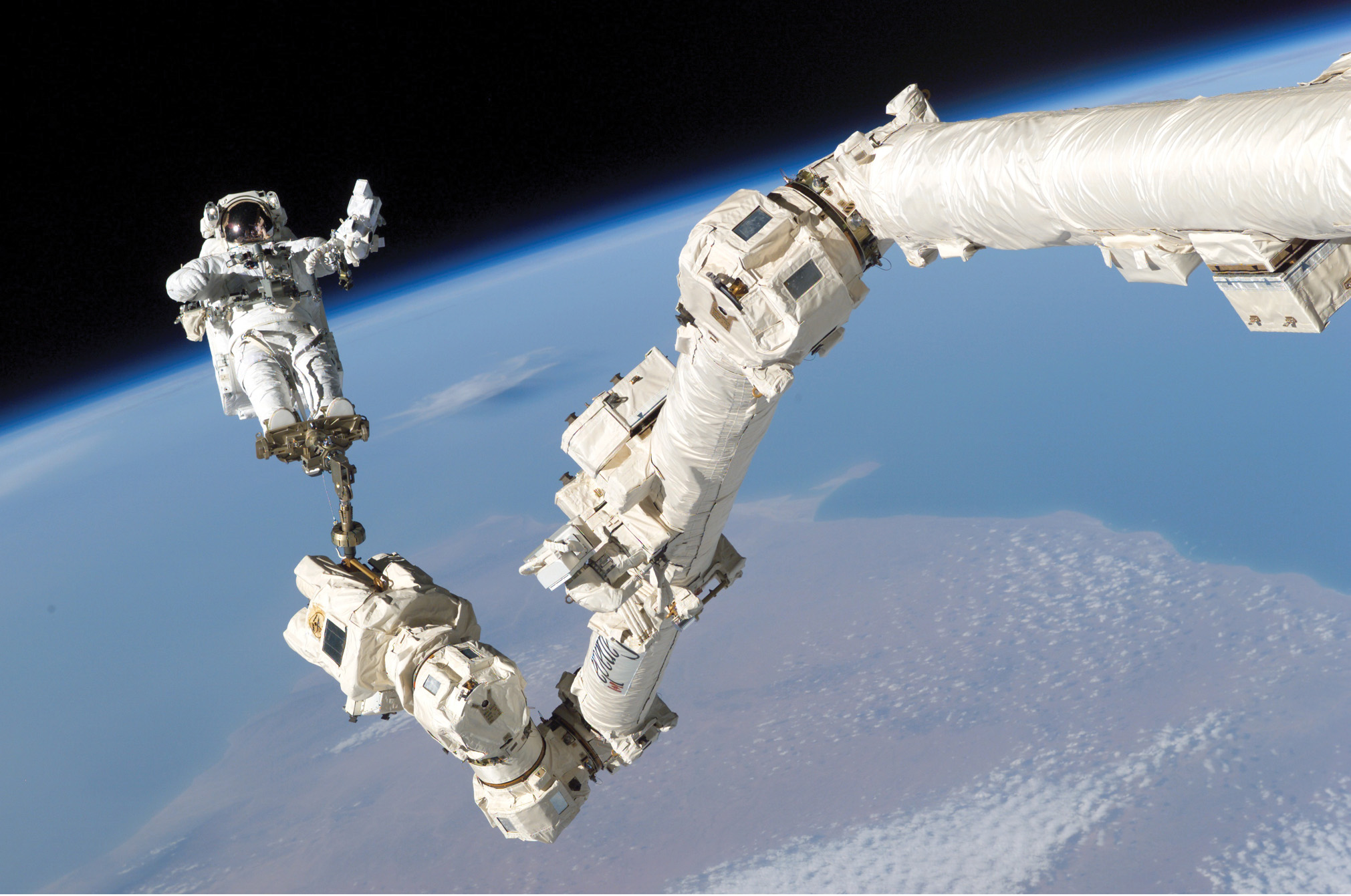CHAPTER
4

An astronaut orbits Earth attached to the International Space Station’s manipulator arm.
Gravitation and the Waltz of the Planets
LEARNING GOALS
By reading the sections of this chapter, you will learn
| 4–1 | How ancient astronomers attempted to explain the motions of the planets |
| 4–2 | What led Copernicus to a Sun-centered model of planetary motion |
| 4–3 | How Tycho’s naked-eye observations of the sky revolutionized ideas about the heavens |
| 4–4 | How Kepler deduced the shapes of the orbits of the planets |
| 4–5 | How Galileo’s pioneering observations with a telescope supported a Sun-centered model |
| 4–6 | The ideas behind Newton’s laws of motion and his law of gravity, which apply to all physical objects |
| 4–7 | How energy can help us understand planetary orbits |
| 4–8 | What causes ocean tides on Earth |
Sixty years ago the idea of humans orbiting Earth or sending spacecraft to other worlds was regarded as science fiction. Today, science fiction has become commonplace reality. Literally thousands of artificial satellites orbit our planet to track weather, relay signals for communications and entertainment, and collect scientific data about Earth and the universe. Humans live and work in Earth orbit (as in the accompanying photograph), have ventured as far as the Moon, and have sent dozens of robotic spacecraft to explore all the planets of the solar systemsphere, or corona, which glows with an unearthly pearlescent light.
While we think of spaceflight as an innovation of the twentieth century, we can trace its origins to a series of scientific revolutions that began in the 1500s. The first of these revolutions overthrew the ancient idea that Earth is an immovable object at the center of the universe, around which the Sun, the Moon, and the planets move. In this chapter we will learn how Nicolaus Copernicus, Tycho Brahe, Johannes Kepler, and Galileo Galilei helped us understand that Earth is itself one of several planets orbiting the Sun.
We will learn, too, about Isaac Newton’s revolutionary discovery of why the planets move in the way that they do. This was just one aspect of Newton’s immense body of work, which included formulating the fundamental laws of physics and developing a precise mathematical description of the force of gravitation—the force that holds the planets in their orbits.
Gravitation proves to be a truly universal force: It guides spacecraft as they journey across the solar system, and keeps satellites and astronauts in their orbits. In this chapter you will learn more about this important force of nature, which plays a central role in all parts of astronomy.